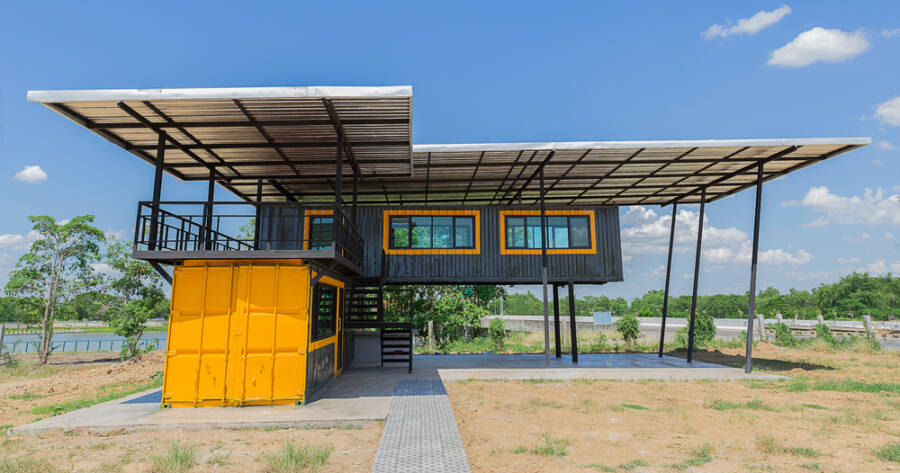The concept of affordable living is evolving, and shipping container homes are emerging as a revolutionary solution. These innovative dwellings, made from repurposed steel shipping containers, are reshaping the housing industry with their sustainability, cost-efficiency, and versatility. As housing costs continue to rise globally, shipping container homes provide an eco-friendly and affordable alternative for individuals and families seeking modern, efficient living spaces.
1. Cost-Effectiveness
One of the most compelling reasons for the rise of shipping container homes is their affordability. Traditional housing construction involves significant expenses for materials, labor, and land. In contrast, shipping containers are readily available and cost-efficient.
Additionally, the modular nature of containers allows for quicker builds, saving on labor costs. Prefabricated container homes are often assembled off-site and delivered ready to install, further reducing expenses. For individuals or families on a tight budget, this affordability makes homeownership more accessible than ever.
2. Sustainability
Shipping container homes align with the growing demand for environmentally conscious living. Repurposing unused or decommissioned containers reduces waste and gives these durable steel structures a second life. Building with shipping containers minimizes the use of traditional construction materials like bricks, cement, and wood, which often have a significant environmental footprint.
These homes are also highly energy-efficient. With proper insulation and the incorporation of solar panels or rainwater harvesting systems, container homes can reduce utility costs and environmental impact. Their eco-friendly appeal makes them an ideal choice for those looking to embrace sustainable living practices.
3. Versatility and Customization
Shipping containers are incredibly versatile, offering endless design possibilities. They come in standardized sizes, making them easy to stack, combine, or modify to create unique layouts. Whether it’s a single compact home, a sprawling multi-container residence, or even a multi-story structure, containers can be adapted to suit various needs and preferences.
The interiors can be fully customized with modern fixtures, stylish finishes, and energy-efficient appliances, creating homes that rival traditional construction in comfort and aesthetics. Many architects and designers have embraced container housing, producing stunning examples of minimalist and contemporary living spaces.
4. Durability and Mobility
Shipping containers are built to withstand harsh conditions at sea, making them incredibly durable and long-lasting. Their steel construction offers natural resistance to weather, pests, and fire, ensuring a safe and secure living environment.
Additionally, container homes are portable, making them an excellent option for people who value mobility or live in areas prone to natural disasters. They can be transported and reassembled with relative ease, providing flexibility for homeowners who might need to relocate.
5. Addressing the Housing Crisis
The global housing crisis has highlighted the need for affordable and scalable solutions. Shipping container homes can be constructed rapidly and at a fraction of the cost of traditional housing, making them an attractive option for addressing shortages in urban and rural areas alike. Governments and non-profits are increasingly adopting container housing to provide shelter for low-income families, disaster relief efforts, and temporary accommodations.
A Modern Solution for Affordable Living
Shipping container homes represent a forward-thinking approach to affordable and sustainable living. Their cost-effectiveness, environmental benefits, versatility, and durability make them a practical choice for individuals, families, and even communities seeking innovative housing solutions. As the world continues to face rising housing demands and environmental challenges, shipping container homes offer a glimpse into the future of modern, affordable living. With their growing popularity, these homes are not just a trend—they’re a transformative movement reshaping how we think about housing.

